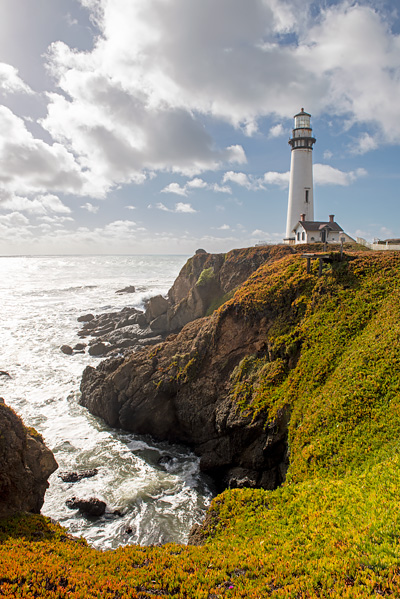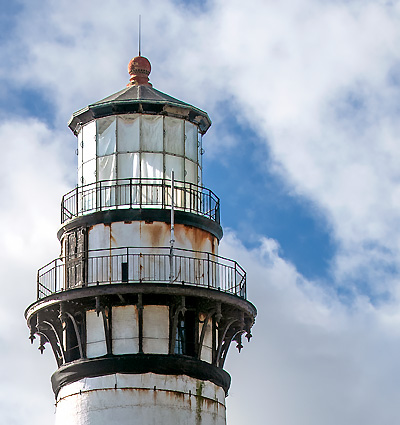National Register of Historic Places in San Mateo County
Pigeon Point Lighthouse
Pigeon Point off Pacific Coast Highway
South of Half Moon Bay
Built 1872
With a height of 115 feet, the lighthouse at Pigeon Point Light Station State Historic Park is the tallest operating lighthouse on the West Coast.
This spit of rocky land, on the migratory path of gray whales, was named Whales Point until July 6, 1853, when the clipper ship Carrier Pigeon on her maiden voyage from Boston to San Francisco ran aground in the thick midsummer's fog. Captain and crew made it safely ashore, but the ship and most of its cargo was beyond salvage. From that day, Pigeon Point replaced the name Whales Point.
After two decades of wrecks at Pigeon Point, the lighthouse opened om November 15, 1872, with a distinctive fog signal and sixteen foot, four ton Fresnel lens designed by French physicist Augustin Jean Fresnel himself.
The lighthouse is still in operation, flashing a thousand-watt light every ten seconds; however the original foghorn was replaced in 1976. The structure survived both the 1906 San Francisco Earthquake on the nearby San Andreas Fault and 1989 Loma Prieta Earthquake.
The grounds are open to the public as Pigeon Point Light Station State Historic Park (California Landmark 930), but the lighthouse itself has been closed and fenced since December 2001 while it waits structural upgrading.

Battery Point Lighthouse, Crescent City
Cape Blanco Lighthouse, Curry County, Oregon
East Brother Light Station, Contra Costa County
Fort Point Lighthouse, San Francisco
Point Arena Light Station, Mendocino County
Point Bonita Light Station, Marin County
Point Cabrillo Light Station, Mendocino County
Point Montara Light Station, San Mateo County
Point Reyes Light Station, Marin County
Pigeon Point Lighthouse, San Mateo County
St. George Reef Light Station, Crescent City
Yerba Buena Island Lighthouse, San Francisco

